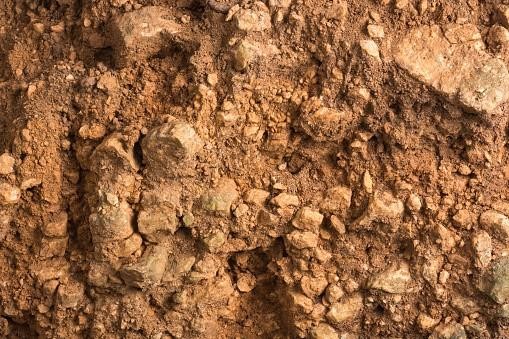
Subscribe To Emails
Subscribe to the YourCotton mailing list to receive updates on new arrivals and promotions (about once every 6 weeks)!

Cotton is one of the most widely used fibers around the world, but do you know where it comes from or if it’s even a renewable resource? In this article, we’re taking an unbiased look at cotton - from its origins to whether or not it can be considered a renewable resource. We will explain the production process for creating cotton and how that impacts our environment. Moreover, by exploring different methods of producing and using this fiber, we’ll discuss steps that individuals and businesses take to ensure sustainability when utilizing cotton as part of their product range. So keep reading to learn more about what truly makes up “the fabric of our lives."
Cotton production is a necessary process that's been around for centuries. Nowadays, it usually involves conventional cotton, a cotton plant grown with specific pesticides and fertilizers used on top of traditional farming techniques. However, there has been an increasing interest in organic cotton production, where no synthetic methods are used, and pesticides or GMOs (genetically modified organisms) are not permitted. Organic cotton requires extra care from its farmers since it can't use harmful chemicals to boost crop yields, but the results are worth it - soft and durable products made from organic cotton.
The usefulness of cotton is more than just the fabric; it is a plant that provides multiple opportunities for use in different areas. For example, recycled cotton is often used to produce new materials and then recycled again, leading to fewer carbon emissions than other materials such as polyester or nylon.
Cotton seeds have various uses for food production, acting as fertilizers due to their insecticidal properties and being used as animal feed. Additionally, they're often crushed for oil and other edible products. With its ability to be recycled and its many uses, cotton cultivation has clear benefits that make it a vital crop to consider. Not only does the fabric industry help by utilizing cotton plants, but so do the agricultural and oil industries too!
Cotton has been a staple in the textile industry for hundreds of years and is still one of the most-used fabrics today. Grown in cotton crops, cotton fiber is used to create cotton fabric through cotton processing. Due to its breathability, durability, and ability to hold dyes well, cotton is a favorite among apparel companies. It's also soft against the skin and can be easily washed at higher temperatures, making it an ideal fabric choice for clothing. Also, cotton is lightweight and doesn’t stick or cling to your body - the perfect combination of comfort and style!

Cotton has long been one of the world’s most important raw materials, used to create a wide array of products, from cotton fibers to clothing. Unfortunately, the rising demand for cotton and subsequent pressure on farmers to produce more has resulted in increasingly intensive farming techniques.
This causes harm both to the environment and sustainability of cotton production in the long term, as the harmful effects of over-fertilization and the use of pesticides can be costly both financially and environmentally. With strategically planned management and land conversion, sustainable cotton production is possible even with high yields; however, it is up to every consumer to support responsible fashion brands and make eco-friendly choices regarding raw materials such as cotton.
Cotton, one of humanity's oldest cultivated fibers, is often seen as a relatively 'simple' material to produce. However, synthetic fertilizers and pesticides in cotton farming have made it anything but. These chemicals lead to soil erosion and water contamination, and their residue remains present in the fabric despite repeated washes.
To make matters worse, some manufacturers have also used toxic dyes to give their cotton fabric an attractive long-lasting color. It is disappointing that such a timeless resource is being treated this way; hopefully, we can find ways of reinstating its traditional practices or using more responsible alternatives.
Cotton demands a large amount of water to grow, and the fact that nearly a fifth of the world’s irrigation water is dedicated to its production puts a strain on resources. The output-to-input ratio is most striking in India, where it takes an incredible 22,500 liters of water to produce just one kilogram of cotton. While more efficient countries like the US are doing better with around 8,000 liters per kilogram, that's still a lot of water! Efforts must be made to ensure minimal disruption to local ecosystems while farming cotton.

Cotton farming on an industrial scale has caused various adverse effects, with soil erosion and aridification being among the most devastating. It's impossible to ignore the global crisis of soil erosion and degradation - National Geographic reports that in only four decades, one-third of all arable land has been depleted, with intensive cotton farming contributing to this shocking statistic. Currently, adequate prevention measures need to be taken due to relatively low soil fertility in many parts of the world, negatively affecting crop yields and economic security.
Despite its many positives, cotton fabric can present a few challenges. One of the main issues with cotton is shrinkage. To tackle this problem, many such fabrics are subjected to pre-shrink treatments that often require a lot of energy and water. Some opt to blend cotton and synthetic fibers (such as polyester) to deal with these shrinkage woes. This makes the fabric more durable when exposed to heat or water but, at the same time, reduces its breathability and comfort factor. Effectively, the short fixes may end up creating more problems than they solve in terms of sustainability.
- Organic Cotton
- Recycled Cotton
- Upcycled Cotton
The future of cotton seems to be ever-changing, and it’s hard to tell if the industry will survive. However, what we do know is that there are more sustainable options out there that don’t put such a strain on the environment. If you’re looking for an eco-friendly option, consider bamboo or hemp fabric – renewable resources. What are your thoughts on the cotton industry? Have you made the switch to more sustainable materials?